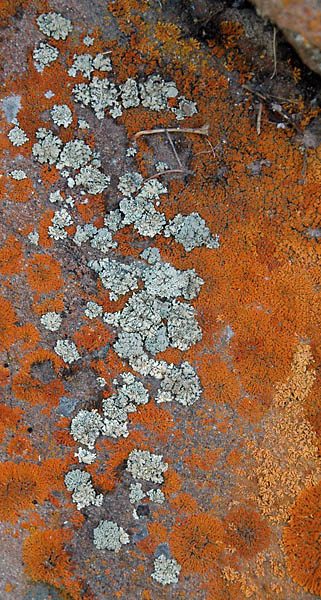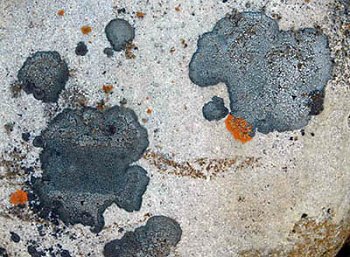home | internet service | web design | business directory | bulletin board | advertise | events calendar | contact | weather | cams

|
Liking Lichen
Peter Neitlich knows a lot about lichens and their cousins. He said that lichens live throughout the Methow Valley on the rocks and trees and soil. But he has looked much further, studying lichens throughout the West and in the Arctic, working for the National Park Service's Western Arctic National Parks and the US Forest Service’s Forest Inventory and Analysis Programs. Lichens are actually fungus symbiotically paired up with algae or cyanobacteria (blue-green algae). Rain, snow, fog and dust land on the fungi, which provides a host site for algae, which photo-synthesize energy from the sun. Because fungi don't have roots, their nutrition comes from the air via dust, gases, or dissolved nutrients in rain or snow. Because they are so adapted to uptake from the air, they are highly susceptible to airborne pollutants like sulfur, nitrogen and heavy metals, and are frequently used as biological monitors of air quality. Neitlich and other scientists, led by Linda Geiser, ran a study based on lichens that provided a measure of the air pollution in western Washington and Oregon. They are mid-way into another such study on the east side of these states including northcentral WA. Their study will measure air pollution effects on sensitive life forms in the east side environment. Lichen grow very slowly. The crust lichens—-which look like colorful paint on rock—-grow only .1 to .5 millimeters per year. Researchers can date geological features like glacial moraines or archaeological remains by the size of the lichens. The record lichen for Peter Neitlich is one at Atigun Pass in the Brooks Range of Alaska, which is about 3 meters across. Researchers estimate it has been growing from 12,000 to 13,000 years in that place. The lichens on rocks, used for dating techniques, are called crustose lichens. Foliose lichens live in the trees, sometimes providing extra nitrogen to their hosts. And some fruticose lichens are used as food by animals and people. (Neitlich cautioned that some lichens are poisonous-so know what you're eating before you dig in). The Chinese are particularly keen on eating lichens, Neitlich said. Native Americans ate lichens, including Bryoria-'old man's beard'-which they mixed into pemmican. People are not the only lichen diners. Other creatures such as flying squirrels and deer also eat the Bryoria found in the Methow Valley. One year Neitlich and his children collected Bryoria for a Halloween costume. They left it on a table outside, ready to be formed into beards and mustaches. Unfortunately, all that was left when they went to prepare their costumes were deer tracks. Not even a thank-you from the local deer who had a pleasant free meal. Trick or treat! - Sheela McLean
|


